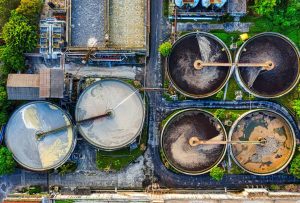Per- and polyfluoroalkyl substances (PFAS) are synthetic chemicals that have been in use since the 1940s. They are commonly found in household products, industrial processes, and even in drinking water. Known for their persistence in the environment and in the human body, PFAS have become a focal point in discussions about environmental contamination and public health.
Understanding PFAS: Origins and Composition
PFAS are a group of man-made substances that include thousands of chemicals. The two most well-known members of this group are PFOA (perfluorooctanoic acid) and PFOS (perfluorooctane sulfonate). These chemicals are primarily utilized due to their ability to repel oil and water, which makes them invaluable in numerous applications across different industries.
The molecular structure of PFAS includes a carbon-fluorine bond, one of the strongest bonds in organic chemistry, which contributes to their unrivaled stability and durability. This trait, however, also means that they do not break down easily in the environment or the human body, earning them the nickname "forever chemicals."
Common Sources of PFAS
PFAS are widespread, and their presence can be traced back to a variety of consumer and industrial products. Some common sources include:
- Non-stick cookware: Many non-stick pots and pans are coated with PFAS to prevent food from sticking.
- Water-repellent fabrics: Outdoor and stain-resistant clothing often contain PFAS for their water-resistant properties.
- Food packaging: Certain food wrappers and containers use PFAS to prevent grease and oil absorption.
- Firefighting foams: Used extensively in firefighting, especially at airports, these foams can contain high levels of PFAS, which often leach into nearby water sources.
Environmental and Health Impacts of PFAS
The widespread use of PFAS and their persistence in the environment have led to contamination in various ecosystems and water supplies around the world. Studies have linked PFAS exposure to adverse health effects in humans, including:
- Hormonal disruptions: PFAS can interfere with hormonal functions, leading to reproductive and developmental issues.
- Cancer risks: There is evidence suggesting a potential link between PFAS exposure and certain types of cancers, notably kidney and testicular cancer.
- Immune system impacts: PFAS may weaken the immune response, reducing the body’s ability to fight off infections.
- Cholesterol levels: Studies indicate that PFAS exposure can lead to higher cholesterol levels, increasing the risk of cardiovascular diseases.
Regulation and Mitigation Efforts
In response to growing concerns about PFAS contamination, several countries have introduced regulations to control their use and mitigate their effects. Efforts are being made to phase out certain PFAS chemicals and replace them with safer alternatives. Regulatory bodies are also setting limits on allowable PFAS levels in drinking water and industrial emissions.
In addition to governmental action, technological advancements are being leveraged to find effective solutions for what is pfas in water and removing them from the environment. Treatment methods such as activated carbon filtration, ion-exchange resins, and high-pressure membranes are being explored and implemented to tackle PFAS contamination in water supplies.
Alternative Solutions and Industry Innovations
Many industries are actively seeking and developing alternatives to PFAS-containing products. Research is ongoing to find eco-friendlier materials that can replicate the oil- and water-repellent properties without the associated environmental and health risks. Some innovations in this space include biodegradable coatings and natural, non-toxic materials designed for use in consumer goods and industrial applications.
What Can Individuals Do to Address PFAS?
While industry and government play significant roles in addressing PFAS contamination, individuals can also take steps to minimize exposure in their daily lives. Here are some practical tips:
- Check product labels: Before purchasing items like cookware or clothing, check labels to see if they contain PFAS or related chemicals.
- Use water filters: Opt for water filtration systems in your home that are proven to reduce PFAS levels, particularly if you live in an area known for PFAS contamination.
- Advocate for change: Support policies and companies that are working to reduce or eliminate PFAS from their products and practices.
- Stay informed: Keep abreast of the latest research and regulations regarding PFAS to make informed choices about the products you use and the policies you support.
The Road Ahead
PFAS represent a significant challenge to public health and the environment, but efforts to combat their impact are gaining momentum. Increased awareness, regulatory action, and technological innovations offer hope for a future where these persistent chemicals pose less of a threat. Through combined efforts from governments, industries, and individuals, it is possible to mitigate the risks associated with PFAS and protect future generations from their adverse effects.
More Stories
Retirement in Portugal: benefits and considerations for expats
Why Portugal is a Top Retirement Destination for ExpatsPortugal has been gaining popularity as a retirement haven for expats from...
Why SEO is always the best way to get customers in 2024 in Europe
The Enduring Power of SEO in Europe's Digital LandscapeAs we navigate through 2024, the digital marketing landscape in Europe continues...
How to buy a property in French Riviera: a step-by-step guide
Understanding the French Riviera Real Estate MarketThe French Riviera, also known as the Côte d'Azur, is a stunning stretch of...
Why invest in France: opportunities and advantages for foreign businesses
France: A Prime Destination for Foreign InvestmentFrance, the world's seventh-largest economy, has long been a hub for international business and...
Cannabis industry in Europe: market growth and regulatory landscape
Introduction to the European Cannabis MarketThe cannabis industry in Europe is experiencing significant growth and transformation, driven by changing attitudes,...
Decarbonising transport: a better, greener Britain through sustainable mobility
The Urgent Need for Sustainable Transport in BritainAs climate change continues to pose significant threats to our planet, the UK...

